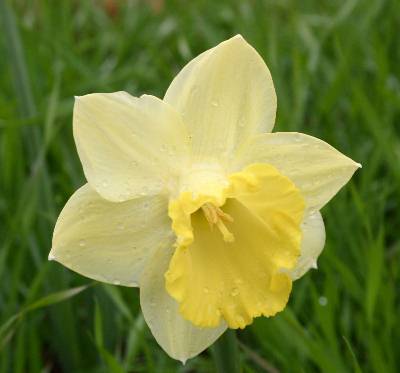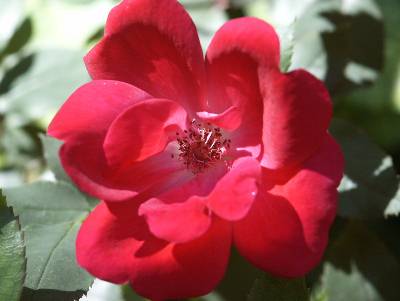St Augustine – Mowing
Every lawn grass has a height at which it should be mowed for best health. The rule is that only one-third of a grass plant should be removed in one mowing. As an example, if you intend to mow your St. Augustine grass lawn at a 2 inch height, you can allow it to grow to 3 inches between mowings. If you fertilize moderately, mowing a lawn should only be needed once per week.
St. Augustine grass lawns need to be cut at a height of 2 to 3 inches. Rotary mowers can do a good job if your St. Augustine grass lawn is relatively smooth and you keep the blade sharp. Otherwise, a more expensive reel mower will be needed. Research indicates that a height of 3 inches is best when growing St Augustine grass in partial shade.
If you allow the grass to get much taller than 3 inches you’ll mow down into the stems that have grown tall and the lawn will not look its best after you mow.
Measure the mowing height by stationing the mower on a flat surface and noting the distance between the blade and the ground. Make sure all four mower wheels are set to the same height.
The first step in good mowing is to have a sharp blade. If the blade has not been sharpened in the past year, it needs to be sharpened or replaced. Dull blades whip the grass ends rather than cutting the grass. The ragged ends left by a dull blade cause a lawn to look yellowish the day after you mow. Ragged grass blades also lead to more water use by the grass and possibly an increase in disease.
In fall, let the grass go dormant without excessive mowing. It will have a nice brown color during the winter. In mid March, mow off the top brown blades to expose the soil to the sun and warm the soil. Scalping the grass very low is not necessary. Burning the dead grass is also not recommended. It is illegal in most areas and it is dangerous in all places.
It is not necessary to catch the clippings when you mow. Research has shown that letting the clippings fall on the ground does not lead to disease or thatch problems. The clippings actually return nitrogen to the soil and save you money on fertilizer.
St. Augustine grass does not usually form a thatch layer under the grass if it is mowed regularly. Using a de-thatcher when it is not needed can hurt the grass more than it helps. If the turf seems to be growing directly in the soil and if the thatch is less than 1/2 inch thick, don’t use a dethatcher.
Q: We need to buy a lawn mower soon. Do we really need a reel mower for the St. Augustine grass ?
A: If the St. Augustine grass lawn is flat, you can get by with a rotary mower, with a sharp blade, instead of a reel model. If there are lots of low places, though, a rotary mower’s wheels will fall into them and produce half-moon scalped spots. You’ll either need to fill the depressions or buy a reel mower. I strongly recommend that if you get a rotary mower, it be a mulching model. You’ll save time by eliminating bagging and you’ll save money on fertilizer too. The clippings that are left on a lawn contribute their nutrients back to the existing turf.
Q: We are contemplating buying a riding mower. What kind would be best for a St. Augustine grass lawn?
A: Your best choice would be a mower whose cutting height is easy to adjust and whose blade is easy to sharpen. Beyond the mower, though, your lawn should be substantially free of ruts and high spots. If a riding mower wheel falls into a rut, the blade will make an ugly scalp in the grass. St. Augustine grass should be mowed at two inches tall. At that height, a sharp blade is mandatory. Don’t think the widest deck would be the best – one 30 to 36 inches wide would be better able to maneuver in a typical home lawn.















